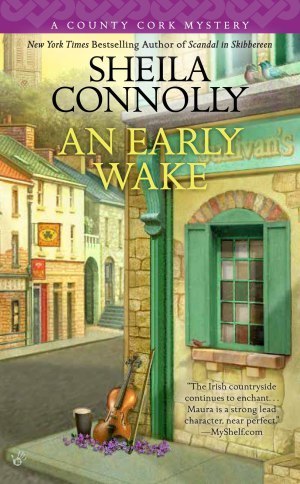Edith Maxwell's Blog, page 264
March 10, 2015
Wisdom Wills
Edith, north of Boston where, despite four-foot piles of snow, the amount of light in the sky is stunning, and the birds sound like spring. (But pity the crocuses…)
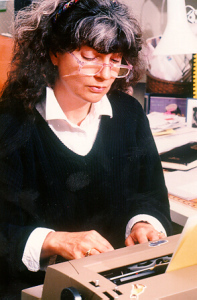
Jane Kenyon
I attended a thought-provoking workshop titled “Dynamic Aging” with twenty other Quakers Saturday morning. The facilitator, Carly Hellen, read several poems during the morning, one of which really struck me. It’s called “Otherwise,” and was penned by New Hampshire’s poet laureate, Jane Kenyon, some months before her death (at 48) when she didn’t yet know she was sick. Bear with me – I’m going to quote it in its entirety (from Collected Poems, Greywolf Press. 2005) :
I got out of bed
on two strong legs.
It might have been
otherwise. I ate
cereal, sweet
milk, ripe, flawless
peach. It might
have been otherwise.
I took the dog uphill
to the birchwood.
All morning I did
the work I love.
At noon I lay down
with my mate. It might
have been otherwise.
We ate dinner together
at a table with silver
candlesticks. It might
have been otherwise.
I slept in a bed
in a room with paintings
on the walls, and
planned another day
just like this day.
But one day, I know,
it will be otherwise.
Each of us in the workshop shared an “otherwise” observation from our own lives. The observation I offered wasn’t, “I write stories that people want to read, and I get paid for it. It could have been otherwise.” But I easily might have shared that one.
How grateful I am, and I know all of the Wickeds are, that we get to do this thing called writing. And what a lesson that poem offers, that 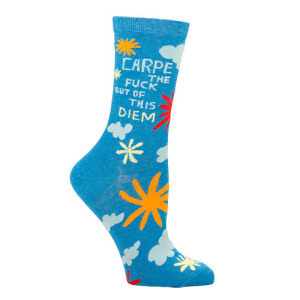 what we have right here, right now, is a blessing not to be overlooked: a day to be seized. In that spirit, I offer these wonderful and irreverent socks I saw on Facebook recently thanks to author Lisa Alber. (Apologies to anyone offended by the language. Definitely not cozy territory!)
what we have right here, right now, is a blessing not to be overlooked: a day to be seized. In that spirit, I offer these wonderful and irreverent socks I saw on Facebook recently thanks to author Lisa Alber. (Apologies to anyone offended by the language. Definitely not cozy territory!)
Another topic Carly covered during the morning was Wisdom Wills. These are sometimes called Legacy Wills or Ethical Wills. They aren’t legal documents, but are meant to be given to those you love, either while you’re alive or after your passing. They can also be used in writing your obituary and in your memorial service. Clearly none of us expects to die any time soon (let’s hope not!). Also clearly – think of Jane Kenyon – we have no idea when our time will come.
One example of a Wisdom Will that Carly gave us stemmed from four questions: Who am I? Who have I become? What matters to me? What do I wish for you? Other examples included anecdotes about the person’s parents and grandparents; an essay about the person’s values, hopes, experiences, and stories; a collection of poetry. President Obama wrote a version of a wisdom will in the form of a letter to his daughters before he took office.
I find this idea deeply moving. Years ago, just after my divorce, I made sure I had a legal will, and in it I included a paragraph addressed to each of my then-teenaged sons, telling them what I loved about them and hoped for them. It’s time to amend that now that they are in their twenties, but I think I’ll keep the original in there, too. And I plan to make time to write my own Wisdom Will sometime soon. Before my scheduled shoulder surgery on March 24 would actually be a great time, come to think of it. Maybe I’ll find a way to work this topic into one of my books, too.
What about you? Have you made some version of a Wisdom Will? Do you even have a legal will? Anybody not in the “seize the day/carpe diem” school of life? Or, perhaps more pertinent to this blog – how do you see any of us using this in our fiction?
Filed under: Edith's posts Tagged: barack obama letter to his daughters, Carly Hellen, ethical will, Jane Kenyon, legacy will, Lisa Alber, Otherwise, wisdom will

March 9, 2015
Guest Post by Tuffy the Maine Coon
By Tuffy, standing in for Liz who’s desperately trying to make her deadlines. 
Greetings! Mom asked me to step in for her and cover today’s blog, since she’s kind of swamped right now. Actually, she told me I had a choice—write a couple of chapters for the book, or write a blog. Since I’m a fan of instant gratification, I decided to write the blog. I’d rather revel in the book when it’s done and I can get all the credit.

The cat tree casualty.
Anyway, I figured I’d tell you a little bit about what’s been going on around here. Mom’s been kind of busy, as I mentioned. I’m hoping she hasn’t been busy enough to not notice the ceiling is falling down in my sunroom because of this wretched winter and all the ice dams. We even had to throw out my favorite cat tree because it was right under the leaks. I am displeased about this, because it was my bird-watching post. I’ve been promised a new one, but have not seen it yet.
It could be for the best, though. I have to take a break from looking out the window, because I’m so depressed at these never-ending mounds of white stuff. I need spring! Warm air! I’ve put in my request to move, but no one has granted it yet.
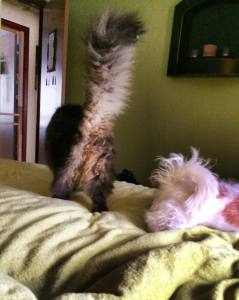
A bird’s eye view of my pants, in case anyone needs a visual
Also, I’m told I need to visit the vet for a “grooming” session. I know what these entail. It’s a diabolical plan to take my pants. I’m a Maine coon, you know. I have very nice pants. Unfortunately sometimes they get, er, dirty, and then I’m forced to undergo this humiliating experience. So far, I’ve dodged the bullet. Could be because of all the snow banks in the driveway, which make it hard to go anywhere, but I’m not complaining.
What else can I tell you? Well, my foster brother The Count is still looking for a home. He’s very handsome – he looks a bit like me, if you couldn’t tell. He has someone who might be interested, so let’s all cross our fingers! I’ll miss the big lug when he goes, but it’s for the best. He hates my canine friends and Lord knows they aren’t leaving. 
Oh, and in case you missed it, I have some exciting news to share! My very own story has been published in a book. Yes, you heard that right! I wrote a story for the book Rescued: The Stories of 12 Cats, Through Their Eyes, which came out in January. I’m super excited about this, although Mom hasn’t yet set up any book signings for me. If you guys see her, you may want to mention that, okay?
 Anyway, the proceeds go to different rescue groups chosen by each author. I chose Friends of Feral Cheshire Cats, a great place here in Connecticut that takes care of ferals like my old friend Lion, who I talked about in my story.
Anyway, the proceeds go to different rescue groups chosen by each author. I chose Friends of Feral Cheshire Cats, a great place here in Connecticut that takes care of ferals like my old friend Lion, who I talked about in my story.
So, that’s pretty much all the news from my perspective. Thanks for letting me visit with you today, Wicked Cozy Authors! Here’s hoping for spring, melting ice and intact ceilings for all!
Readers, leave a comment about what’s new in your world. Tuffy wants to know.
Filed under: Liz's posts Tagged: deadlines, feral cats, ice dams, Maine coon cats, Rescued, Tuffy, winter

March 6, 2015
Best Short Agatha Nominees on Ideas
Edith, north of Boston, wondering if we’ll ever see bare ground again.
I am so delighted to be one of this years nominees for the Agatha Award for Best Short Story. My fellow nominees are an extremely august group: Kathy Lynn Emerson, who has published 54 novels and was last year’s Malice Domestic Guest of Honor. Barb Goffman, who has won the Macavity award for Best Short Story and has been nominated for an Agatha eight times. And Art Taylor, who won last year’s Agatha for Best Short Story, and who is nominated for two stories this year. Wow! What an honor to be part of this group.
Since Barb Ross was nominated for Best Short Story last year, I asked her to come up with some interview questions for the four of us. Take it away, Barb!
Barb R: How do ideas for short stories come to you? Is it a character, a setting, opening lines and a voice? Is it the same every time or different? And when you have these ideas, how do you know which ones are worth pursuing? How did you get the idea for your nominated short story?
Art: Ideas for stories come from a variety of places for me: an overheard bit of  conversation, a dream (or more likely a nightmare), musings about “what if?” in the middle of everyday activities, something I’ve read that prompted my own imagination in fresh directions, or even simple writing prompts and challenges. Just the other day, a student in my creative writing class at George Mason University was trying to talk about the witness protection program but talked about “victim replacement” instead—and I immediately called “dibs” on the idea! We’ll see where that one goes.
conversation, a dream (or more likely a nightmare), musings about “what if?” in the middle of everyday activities, something I’ve read that prompted my own imagination in fresh directions, or even simple writing prompts and challenges. Just the other day, a student in my creative writing class at George Mason University was trying to talk about the witness protection program but talked about “victim replacement” instead—and I immediately called “dibs” on the idea! We’ll see where that one goes.
 “Premonition,” my Halloween story from Chesapeake Crimes: Homicidal Holidays, was sparked by a dream that kicks off the story—and then I wanted to pursue a little style experiment with the second-person narration, which drove the story the rest of the way. For “The Odds Are Against Us” from Ellery Queen Mystery Magazine, I had an idea about friendship and duty and the two coming into conflict with one another, motivated in part by a David Goodis story I taught at few years back, “Professional Man,” though mine’s not nearly as noir, of course.
“Premonition,” my Halloween story from Chesapeake Crimes: Homicidal Holidays, was sparked by a dream that kicks off the story—and then I wanted to pursue a little style experiment with the second-person narration, which drove the story the rest of the way. For “The Odds Are Against Us” from Ellery Queen Mystery Magazine, I had an idea about friendship and duty and the two coming into conflict with one another, motivated in part by a David Goodis story I taught at few years back, “Professional Man,” though mine’s not nearly as noir, of course.
For the project I’m working on right now—a novella—everything centers around a postcard that I found in an used book many years ago and have been hanging on to ever since, just waiting for a plot to spill out of it. (I finally think I’ve found one, but really, I never know which ideas will ultimately come together and which won’t until the story is done.)
Kathy: Almost all my short story ideas have started out as titles. They pop into my head, usually without any story attached. Some, like “Lady Appleton and the Creature of the 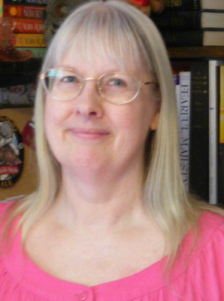 Night” clearly call for me to use one of my series characters. That one, typically, came without any other details. If a title sticks with me long enough, I write in on the tab of a fresh Manila folder so I have a place to put random ideas, usually written on scraps of paper. Some folders go years without any attention, but they’re there, waiting, when I have time and inclination to think about writing something shorter than a novel.
Night” clearly call for me to use one of my series characters. That one, typically, came without any other details. If a title sticks with me long enough, I write in on the tab of a fresh Manila folder so I have a place to put random ideas, usually written on scraps of paper. Some folders go years without any attention, but they’re there, waiting, when I have time and inclination to think about writing something shorter than a novel.
Toward the end of last year, I worked on four of these. Two of them have been submitted. The other two need more work. One may actually end up being the proposal for a new contemporary cozy series. The other is “Creature” and I think all it needs is a better ending. I just haven’t thought of one yet.
As for “The Blessing Witch”—yes, title first again, only it started out as a title for a novel. My agent had asked me if I’d ever thought about writing an Elizabethan thriller, possibly with witches. Deborah Harkness’s A Discovery of Witches had just come out to rave reviews. I gave it a try but my heart wasn’t in it. I wanted instead to go back to my Face Down series and spin off Lady Appleton’s foster daughter, Rosamond, in her own series. I’ve since done that. As of this week, Murder in the Queen’s Wardrobe is available in both hardcover and ebook formats.
My agent had asked me if I’d ever thought about writing an Elizabethan thriller, possibly with witches. Deborah Harkness’s A Discovery of Witches had just come out to rave reviews. I gave it a try but my heart wasn’t in it. I wanted instead to go back to my Face Down series and spin off Lady Appleton’s foster daughter, Rosamond, in her own series. I’ve since done that. As of this week, Murder in the Queen’s Wardrobe is available in both hardcover and ebook formats.
But to get back to the question, in the course of working on the witch/thriller idea, I put potential characters together and let them interact with each other. The result was Old Mother Malyn, the blessing witch of the title, and her granddaughter and apprentice, Joan, who was originally intended to be the protagonist in the thriller and is now the point of view character for both “The Blessing Witch” and the “Cunning Woman” and considerably more cozy. I currently have a folder labeled “The Finder of Lost Things” that in time may turn into a third short story featuring these characters. At the moment it is empty.
Barb G: My story ideas come in all different ways. Sometimes while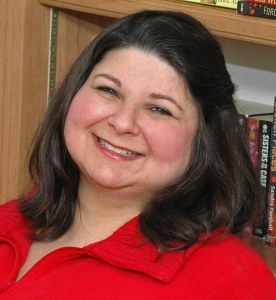 reading a news article, an idea will spark. Other times, I’ll wake up in the middle of the night, with a voice in my head, saying a sentence or two. I jump up and write that down. Ultimately, however, I need to also hear a voice for the main character. Without the voice, the idea goes nowhere. You can have an interesting conflict, but without the right main character/voice to react to it, causing the plot to unfold, the story will not work (at least for me). That’s how I know which stories to pursue–the ones with the exciting voice.
reading a news article, an idea will spark. Other times, I’ll wake up in the middle of the night, with a voice in my head, saying a sentence or two. I jump up and write that down. Ultimately, however, I need to also hear a voice for the main character. Without the voice, the idea goes nowhere. You can have an interesting conflict, but without the right main character/voice to react to it, causing the plot to unfold, the story will not work (at least for me). That’s how I know which stories to pursue–the ones with the exciting voice.
For my nominated story this year, “The Shadow Knows,” I started with a conflict in mind: A man who lives in a cold climate that always has a l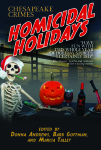 ong winter truly believes his town’s groundhog is to blame, so he decides to get rid of that groundhog. I wanted to make the story funny. But it wasn’t until I started hearing my main character, Gus, grumbling about the cold and about Groundhog Day to his two best pals that the caper began to unfold in my mind. Considering this terrible and long winter we’re having, Gus might have had the right idea indeed.
ong winter truly believes his town’s groundhog is to blame, so he decides to get rid of that groundhog. I wanted to make the story funny. But it wasn’t until I started hearing my main character, Gus, grumbling about the cold and about Groundhog Day to his two best pals that the caper began to unfold in my mind. Considering this terrible and long winter we’re having, Gus might have had the right idea indeed.
Edith: I’m like everyone else. Sometimes a line or a character just  pops up and won’t go away, and I think it’s different every time. Sometimes I see a person or situation on the street that demands a story. Right now, the line “Who wouldn’t fall in love with Adam?” is insisting I write a story about a cute thirty-something who wears vests and a pony tail. I’m trying not to give in because I have too much else to do. But don’t be surprised if…
pops up and won’t go away, and I think it’s different every time. Sometimes I see a person or situation on the street that demands a story. Right now, the line “Who wouldn’t fall in love with Adam?” is insisting I write a story about a cute thirty-something who wears vests and a pony tail. I’m trying not to give in because I have too much else to do. But don’t be surprised if…
My first crime story ever published, “Obake for Lance” (in Riptide, Level Best Books) sprang out of a true story I heard when I lived in Japan for a couple of years. The next tale of murderous revenge, “Reduction in Force” (Thin Ice, Level Best Books) I wrote after I lost my hi-tech job in a RIF: reduction in force. That was quite satisfying, as was my nominated  story, “Just Desserts for Johnny” (Kings River Life Magazine). When I was trying to sell my first novel-length mystery, Speaking of Murder, I had a near miss with what turned out to be a fraudulent small press. The editor said his name was Giovanni Gelati. Really? So I could hardly not write a story of murderous revenge on a literary thief named Johnny Sorbetto, right? Voila, “Just Desserts for Johnny” was born.
story, “Just Desserts for Johnny” (Kings River Life Magazine). When I was trying to sell my first novel-length mystery, Speaking of Murder, I had a near miss with what turned out to be a fraudulent small press. The editor said his name was Giovanni Gelati. Really? So I could hardly not write a story of murderous revenge on a literary thief named Johnny Sorbetto, right? Voila, “Just Desserts for Johnny” was born.
Thanks so much to Art, Kathy, and Barb G for stopping in today, and we’ll see you in Bethesda. And great questions, Barb R!
Readers: Other questions for the nominees? Do you read short stories? If you’ve written them, what’s your process?
Filed under: Edith's posts Tagged: Agatha award Best Short Story, Art Taylor, Barb Goffman, Chesapeake Crimes: Homicidal Holidays, Ellery Queen Mystery Magazine, Just Desserts for Johnny, Kathy Lynn Emerson, Level Best Books, Premonition, The Odds Are Against Us

March 5, 2015
Opening Lines
Add an opening line for the picture below: Julie: And that, dear readers, is how he got caught. Not because they found his boss’s body in the room. But because he couldn’t remember the room number, and when he guessed, he broke into a room where there was a drug bust going down.
Julie: And that, dear readers, is how he got caught. Not because they found his boss’s body in the room. But because he couldn’t remember the room number, and when he guessed, he broke into a room where there was a drug bust going down.
Barb: Through dimly lit hallways I’ve wandered, searching, searching as I pondered…
Liz: I had no idea how I’d found myself in a hallway reminiscent of The Shining, but if I saw two creepy little twin girls wandering around I was out of here.
Edith: Damn. The only room with light shining under the door was the one room Dina had guaranteed would be empty. Where was I supposed to dump the body now?
Sherry: I felt like I was in the worst ever version of Let’s Make A Deal. But if I picked the wrong door I’d die.
Jessie: Terrance had made peace with his diagnosis. He’d set his affairs in order, visited with family and finished the novel he had always meant to write. When the end came he thought he was ready. But what surprised him, what he had not been prepared for, was the tunnel. Everyone said there was supposed to be a light at the end of it but all he saw was gloom.
Filed under: Opening Lines

March 4, 2015
Wicked Wednesday — Movies I Haven’t Seen
It seems like all of us have a movie that the rest of the world has seen but we’ve somehow missed. So today we are talking about which movie we missed.
Sherry: Dirty Dancing — I don’t know how I missed it. I loved Patrick Swayze — I think I’ve seen almost every other movie he’s been in. I almost met him in person when he was filming a movie on the base we’d lived on in Los Angeles. (I did meet Mary Elizabeth Mastrantonio and the cute little boy from the first Jurassic Park movie.) I love dancing and romance but somehow I’ve never managed to sit down and watch Dirty Dancing.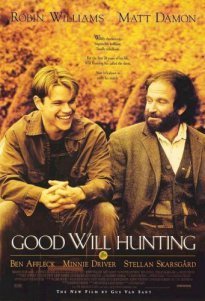
Edith: Oh, I loved Dirty Dancing, Sherry! Have seen it a couple of times.
I never saw Titanic. Or Good Will Hunting, but I still want to, even more now that we’ve lost Robin Williams. And I fell asleep during Forrest Gump and never finished watching it.
Julie: Years ago the Wang Center did a Monday night movie series. That was a great opportunity to know off many of the “must see” films–Lawrence of Arabia, Dr. Zhivago, Gone With The Wind. I’ve still missed a few of the big ones. But one movie I reference a lot, but have never seen, is What Ever Happened to Baby Jane? One reference came last week after a bad bout of hat head combined with smeared red lipstick due to a scarf malfunction.
Jessie: I’ve never seen E.T. My great aunt told my parents it wasn’t appropriate for kids and for some reason they believed her. By the time I was old enough to make my own movie choices I was no longer interested.
 Barb: I’ve never seen Titanic, either, though I’ve seen so many clips, I feel like I’ve seen it. This Christmas season, I watched Chitty Chitty, Bang, Bang with my two kids (both in their thirties), who wouldn’t believe I’d never seen it, because they had seen it “100s of times.” Where was I while all this was going on? I loved it, but that is one weird movie. While we’ve been touring Charleston all day today–on the horse-drawn carriages and in historic homes, tour guides keep asking, “Have you seen The Notebook?” Nope, nope and nope.
Barb: I’ve never seen Titanic, either, though I’ve seen so many clips, I feel like I’ve seen it. This Christmas season, I watched Chitty Chitty, Bang, Bang with my two kids (both in their thirties), who wouldn’t believe I’d never seen it, because they had seen it “100s of times.” Where was I while all this was going on? I loved it, but that is one weird movie. While we’ve been touring Charleston all day today–on the horse-drawn carriages and in historic homes, tour guides keep asking, “Have you seen The Notebook?” Nope, nope and nope.
Liz: No Titanic? No Dirty Dancing?? You guys are killing me! But I shouldn’t talk. There are so many I haven’t seen. Like Any of the Lord of the Rings, or (ashamed to admit it) Star Wars. Just not my thing!
Readers, which big movies have you missed?
Filed under: Wicked Wednesday Tagged: chitty chitty bang bang, Dirty Dancing, Forrest Gump, Good Will Hunting, the notebook, Titanic

March 3, 2015
Reading Outside The Box
Jane/Susannah here, so excited to be doing her first post as a Wicked Accomplice!
I have a confession to make. Now that I write cozy mysteries, I read fewer of them than I used to.
Oh, there are still series that I read religiously, the ones I’m invested in, like Joanne Fluke’s Hannah Swensen mysteries (oh, those recipes!), and Rhys Bowen’s Her Royal Spyness series (will the penniless Lady Georgiana ever get her HEA with the hunky, equally penniless Lord Darcy?). And of course now that I’m fortunate enough to know so many authors, including the Wickeds, in real life, I try to read as many of those as time permits.
But it’s only partially about time. I have found I need to read other genres to keep things fresh in my own writing. So while I adore the cozies, quite often I will reach for something quite different:
Romance. Romance is a cousin to the cozy, in that the reader always knows what to expect, and there’s always a satisfying resolution. Girl meets Boy, external and internal obstacles come between them, Girl and Boy get back together at the end. It’s a formula, and it works. The mystery writer has a lot to learn from romance, which requires going deep into the characters’ heads and hearts, and establishing, building, and sustaining emotion as the main focus of the story. Mysteries are usually more plot driven, and I constantly catch myself only scratching the surface of my characters. The more romance I read, the more I realize that the key to any story is the characters–who they are, and how they interact. Complex characters superimposed on a well-constructed plot take a mystery to the next level.
Horror. Yes, you read that right. I read horror. Stephen King is a favorite. I don’t actually love the parts where gory stuff happens, but I’m not the type to have nightmares about it, either. Books never scare me (although movies can–they must activate a different part of the brain or something). Like romance, horror speaks to something primal in our psyches–not the search for love, but the idea that there is the potential for good, and evil, in all of us. How does that help the mystery writer? Well, we’re writing about murder and associated crimes. Just because cozy authors don’t depict anything graphic, or explicitly describe deranged killers, it doesn’t mean we don’t need to understand what makes our criminals tick. Horror writers have this down pat.
Literary Fiction. I read this less often, but if it’s a successful book (meaning lots of people are buying, reading, and recommending it), I will often give it a try in an attempt to analyze what makes it so popular. And I sometimes enjoy the slower pace literary fiction usually has as opposed to genre fiction. In a lightning-fast world, anything that can slow you down to savor a beautiful (likely tragic) story can be a good thing. Literary fiction is often as much about the words as well as the story. Reading it can make you more aware of what words you are using and how you’re putting them together.
How about you? Do you read outside your genre box?
Filed under: Craft, Jane's posts

March 2, 2015
Cowboys and Cozies
by Sheila Connolly
I had this weird brainstorm the other day: television westerns in the 1950s were actually cozies! It could be because I’ve been reading one of Craig Johnson’s books, As the Crow Flies (which he signed for me when he was Guest of Honor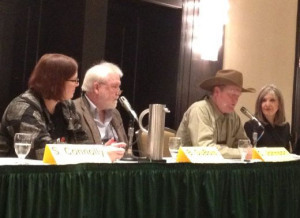 at last year’s New England Crime Bake. I was even on a panel with him, which was a thrill.) He writes about a Wyoming sheriff, Walt Longmire, and I think he’s a worthy successor to Tony Hillerman, in terms of capturing the spirit of the west and its citizens.
at last year’s New England Crime Bake. I was even on a panel with him, which was a thrill.) He writes about a Wyoming sheriff, Walt Longmire, and I think he’s a worthy successor to Tony Hillerman, in terms of capturing the spirit of the west and its citizens.
Many of us grew up watching westerns on television. In case you’re not quite old enough to remember, that was about all there was to watch in those days (apart from The Mickey Mouse Club and roller derbies). Warner Brothers cranked them out regularly, and of course there was Wagon Train and Gunsmoke (question: did Wagon Train ever arrive anywhere? Or was it some existential endless quest?) Or the darker Have Gun, Will Travel, which for some reason my eight-year-old friends and I loved, a fact that has always mystified me, because that was a show with some subtlety and nuance, and a slightly ambiguous lead character (Richard Boone, aka Paladin).
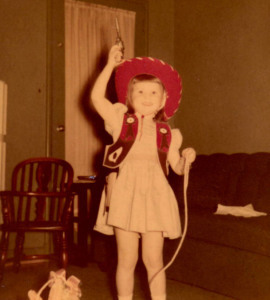
Too bad you can’t see the boots–they were red..
The premise of most of these series was simple: you had this good guy at the center (the one with the white hat), who was pretty much a loner (few girlfriends, and if he ever had one, she got killed off quickly, á la Bonanza), but he had a circle of quirky friends–think Chester on Gunsmoke, or the Andy Devine role on Wild Bill Hickok (a totally irrelevant aside: Wild Bill Hickok was played by Guy Madison, who married Sheila Connolly—no relation—who I think is still alive and living on Cape Cod). The Good Guy also had a mission: to pursue evil-doers and seek justice, whether or not he was a designated officer of the law. Even if he was officially not quite squeaky clean (bounty hunter Steve McQueen on Wanted: Dead or Alive, for example), he still pursued justice, week after week—and won.

I didn’t discriminate–here I am as an Indian. The moccasins were pink.
Wow—now I realize how I spent my youth. I seem to have watched every western there was. Worse, I remember them all, and can probably sing the theme songs.
But my school friends and I took it another step: we re-enacted these episodes, or made up our own, on the playground (we had a generous recess in those days). The wimpy kids we didn’t like much got to play the wife and stay home and tend to the ranch. We fantasized, we put ourselves into the drama—and we had to wrap up the plot in the half-hour we had outside. Or end with “to be continued…”
Who knew that was training for a writer?
Some people complain that cozy mysteries are predictable and written by formula. It is true: they follow a pattern—but it’s a pattern that people enjoy. And there’s nothing new or surprising about that. If I tried really hard, I could probably come up with some examples of medieval literature that follow the same pattern. Is Wagon Train a revised Canterbury Tales?
The thing of it is, ordinary people like to know what they’re going to get when they pick up a new book. They like to believe that it’s possible to right wrongs, to save the day, even if it’s only on paper. It makes them feel good. They may all pick up the “serious” or “important” books on occasion, or the ones that everyone has been talking about, but they come home to the cozies.
And I think that’s what we took away from all those westerns, where the good guy always won. Sure, there was violence (all those guns!), but seldom did anyone die—they were always carefully shot in the fleshy part of the shoulder, and only because they deserved it (well, except for all those wives on Bonanza…).
Those of us who write cozies are the latest generation of a long line of storytellers, and we give people what they want. The line of succession made a stop in The Wild West, and now it’s meandering through a succession of food shops and farms and craft stores—but the moral is the same: the good gals win.
Oh, right, I published a book last month, An Early Wake. This one’s not set in the Old West, but it is set in what the Irish call “The Wild West” in Cork, and the people there always thought they were a bit above the (British) law. It was a New York Times and a Barnes and Noble paperback bestseller the week it was released.
Filed under: Sheila's Posts Tagged: sheila connolly

February 27, 2015
Ask the Expert–Paula Munier and Plot Perfect
Welcome Paula Munier to Ask the Expert this Friday. Paula is the author of Plot Perfect: How to Build Unforgettable Stories Scene by Scene.
Think of your favorite story–the one that kept you turning pages late into the night, the one with a plot so compelling, so multilayered, so perfect that you couldn’t put it down. How can you make your own plots–in your novels, short stories, memoirs, or screenplays–just as irresistible?
Plot Perfect provides the answer. This one-of-a-kind plotting primer reveals the secrets of creating a story structure that works–no matter what your genre. It gives you the strategies you need to build a scene-by-scene blueprint that will help elevate your fiction and earn the attention of agents and editors.
By coincidence, this winter, all the Wickeds happened to be working on first drafts at the same time. E-mails flew back and forth. “Using Plot Perfect to help me outline,” Julie wrote. “Using Plot Perfect to figure out a subplot,” Liz said. Here in Key West, my husband Bill, also a writer, and I were passing the book back and forth as we worked on our drafts.
Whoa, I thought. Something is up. So the Wickeds asked Paula here today to answer some questions for us and our readers.
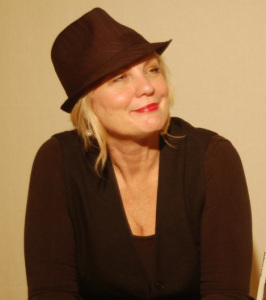 Barb: You’ve been an editor, an agent and an author. Of all the writing elements, why did you feel a book on plot was needed?
Barb: You’ve been an editor, an agent and an author. Of all the writing elements, why did you feel a book on plot was needed?
Paula: As an agent, I’m always looking for good writers telling good stories. I’m not going to rewrite your stories for you if you’re not a good writer, but if you are a good writer I can help you tell a better story.
As an editor, I spent many years helping writers structure their books. Structure is often where good writers go wrong—especially those new to long-form storytelling. Writing a novel is a marathon, not a sprint. And producing a series is one marathon after another. This can be a challenge for new novelists, who may have only written short stories or essays or news articles before trying their hand at the novel. Those writing crime fiction, where plot is so important, really need to master structure before they shop their work.
I represent—and have sold—many debut authors. I love helping novelists get into print!
Barb: Your book is about plot, but you spend a lot of time on the idea of theme in novels. Why is theme so important, and how does understanding your theme support plotting?
Paula: The book is based on my Plot Perfect boot camps. When Writers Digest first asked me to do a plot-related boot camp, I wanted to come up with a different approach to plot. And I chose the theme-related approach to plot, because I’ve seen too many manuscripts that read like video games—all action but no theme. Plot is what happens; theme is what it means. Theme is what your story is really about. I see too many stories that aren’t really about anything—they’re just one action after another. There’s no there there.
For crime fiction, theme is paramount. The themes in this category are big: good vs. evil, kill or be killed, the search for the truth, the nature of justice, society vs. the individual, chaos vs. order, etc. Readers expect crime fiction writers to tackle these big themes—and weave them right into the plot.
Barb: One of the things the Wickeds loved about your book is that while the concepts used in writing a novel can be quite abstract, you make them concrete by providing many, many examples. How long did it take you to write Plot Perfect, how did you find the examples and what criteria did you use to select them?
Paula: I had six months to write the book, but I’d been running the Plot Perfect boot camps for a couple of years already, so I knew the material fairly well. (I also teach at the Algonkian New York Pitch conferences, as well as other venues.)
I use a lot of examples because, as you say, it helps writers extrapolate, and apply what I’m talking about to their own work. I tend to use examples from the writers I love—from Shakespeare and Jane Austen to Dashiell Hammett and Alice Hoffman and Robert B. Parker—as well as the blockbusters that struck a chord with readers—Gone Girl, Eat Pray Love, etc.
Also, I’d be remiss not to acknowledge that my editor at Writers Digest, Rachel Randall, is an even bigger believer in examples then I am—she had me add even more!
Barb: You look at so many books. As an agent, what do you think is the make-or-break? What single element most frequently causes you to take on a book? What single element most frequently causes you to reject it?
Paula: In today’s marketplace, your work really needs a USP: unique selling proposition. That’s marketing speak for being able to set your work apart from the competition. That often boils down to high-concept. Even in cozies, it’s often the cozies with well-defined premises/settings/USPs—the organic farming mystery, the cake decorating mystery, the Pennsylvania Dutch mystery, etc.—that win the contracts.
I always advise writers to read widely in their category—you’d be surprised how many writers don’t! You should pay particular attention to those debut authors who have broken out in the past three years. This is the competition that you’ll need to position your work against.
In terms of clients: I’m looking for a great writer with a story with a strong USP that I think I can sell. If I can’t boil it down to a 50-word pitch, I can’t sell it. That said, I’m a sucker for any writer with a strong voice. I try to stick to the categories I know well and have a soft spot for as a reader: women’s fiction, mainstream fiction, high-concept Sf/fantasy, YA fiction, any kind of crime fiction, as well as nonfiction.
Mostly I pass on projects because 1) the writer’s level of craft is not high enough for prime time yet; 2) the story idea isn’t strong enough; and/or 3) it’s just not my kind of project. Also, I won’t work with any writer who resists revision or refuses to take marketing and promoting her work seriously.
Barb: You’re a writer, too. What are you working on now?
Paula: Thanks for asking! I just finished a new book for Writers Digest called Writing with Quiet Hands: Notes on a Writer’s Craft, in which I talk about what it means to create good stories for today’s changing publishing landscape, and the finer points of craft that can make the difference between getting publishing and not getting published.
I’m also working on a new novel.
Barb: Thanks Paula. Readers, if you have questions or comments for Paula, fire away!
About Paula Munier: Writers are my tribe. I began as a journalist, and over the years I’ve penned countless new stories, articles, essays, collateral, and blogs, as well as authored/co-authored more than a dozen books, most recently Fixing Freddie, 5-Minute Mindfulness, and A Miscellany of Murder. Along the way, I’ve added editor, acquisitions specialist, digital content manager, and publishing executive to my repertoire—the common denominator being my commitment to writers and writing, no matter what my title. From Gannett, Greenspun, and Prima Games to Disney, Quayside, and F+W Media, I’ve fought the good fight for good writing and good writers. And I’ve loved every minute of it.
But now, as an agent, I have the opportunity to support talented writers in the most direct manner possible, helping my clients do good work, land great publishing deals, and build successful writing careers. So if you’re a writer as obsessed with words and stories as I am, and you’re in it for the long haul, consider working with me. My specialties include mystery/thriller, SF/fantasy, romance, YA, memoir, humor, pop culture, health & wellness, cooking, self-help, pop psych, New Age, inspirational, technology, science, and writing.
Filed under: Ask the Expert Tagged: How to write a novel, literary agent, Paula Munier, Plot Perfect

February 26, 2015
How I Learned to Relax About Being a “Cozy” Author and Just Write the Damn Books–Part I
by Barb–sad because we’re leaving Key West in three days (or maybe perplexed is a better word. Why are we returning to the frozen north?)
 I’ve wanted to write about how I feel about being an author of cozy mysteries for awhile, but it’s always been a complicated and evolving issue. So I’ve decided to split the topic up into three blog posts that I’ll put up during my next several turns here at Wicked Cozys.
I’ve wanted to write about how I feel about being an author of cozy mysteries for awhile, but it’s always been a complicated and evolving issue. So I’ve decided to split the topic up into three blog posts that I’ll put up during my next several turns here at Wicked Cozys.
The Beginning
I didn’t start out to write a cozy. I started out to write a mystery. All my life I had read widely in the mystery field, without really differentiating by sub-genre. I cut my teeth on those amateur sleuths Nancy Drew and Miss Marple, who despite her maiden state, is the grandmother of all of us authors of amateur sleuths. I read Dick Francis and Ross Thomas and John D. MacDonald and Dennis Lehane and Dorothy L. Sayers and Janet Evanovich. Admittedly, it was a simpler time. I found most of my books through recommendations from friends and relatives, as well as friendly independent bookstore clerks and librarians. Megabookstores and online retailers hadn’t yet created such a strong need for subcategory labeling to help you find a book you would like.
I knew I wanted to write a series. I loved the books of P.D. James and Ruth Rendell’s Wexford series. I loved watching characters change over time, and returning to find out what was going on in their lives. I was particularly taken with Rendell’s Kingsmarkham, it’s strong sense of place and how it evolved from a sleepy market village to a sprawling suburb with a highway on-ramp and a diverse population. Even Christie’s St. Mary Mead evolved, sprouting a housing development after the second World War. To me, it was all magic.
 My first mystery, The Death of An Ambitious Woman, had a professional sleuth as its protagonist, a female police chief, but it was also very much a village mystery. Which was one of the many reasons it was so hard to sell, though it was eventually published by Five Star/Cengage.
My first mystery, The Death of An Ambitious Woman, had a professional sleuth as its protagonist, a female police chief, but it was also very much a village mystery. Which was one of the many reasons it was so hard to sell, though it was eventually published by Five Star/Cengage.
We’ve told many times on the blog how our agent, John Talbot, approached Sheila Connolly, who was then President of Sisters in Crime New England, to see if any members had an interest in writing a spec proposal for a cozy mystery series. I was very interested. Because of my love of series, I knew I wanted a multi-book contract, something Five Star didn’t offer. I wrote to Sheila behind the scenes and asked her if she thought I could do it. She pointed out that my first book had a lot of cozy elements. With her encouragement, I called John. We batted some ideas around, and chose “clambake.”
 In that first call, John said, “You know what cozies are, right? Amateur sleuth, small town, ya-da, ya-da.” I’m not sure John actually said “ya-da, ya-da,” but he definitely ya-da, ya-da-ed the definition of a cozy. I assured him that I did and set to work writing the proposal.
In that first call, John said, “You know what cozies are, right? Amateur sleuth, small town, ya-da, ya-da.” I’m not sure John actually said “ya-da, ya-da,” but he definitely ya-da, ya-da-ed the definition of a cozy. I assured him that I did and set to work writing the proposal.
During that period, I read a lot of books that were actually defined as “cozy mysteries.” I read books by our own Sheila Connolly, and by Leslie Meier and Kaitlyn Dunnett/(Kathy Lynn Emerson). I read John Talbot’s most successful cozy author, Cleo Coyle and Kensington’s most successful cozy author, Joanne Fluke. I was inspired by all of them. I also read several frankly terrible cozies. I won’t name any names, but ones I couldn’t finish. Ones that made me dread going to bed because I would have to open them.
 I was undaunted. What area of literature doesn’t have some absolutely awful books in it? None is the answer. And, as I’ve learned over and over, my absolutely awful book is your favorite and vice versa, because the role of personal taste is huge. Besides, though I had tried to keep a professional distance from my proposal, I was falling in love with my characters and my setting. I really wanted to write these stories.
I was undaunted. What area of literature doesn’t have some absolutely awful books in it? None is the answer. And, as I’ve learned over and over, my absolutely awful book is your favorite and vice versa, because the role of personal taste is huge. Besides, though I had tried to keep a professional distance from my proposal, I was falling in love with my characters and my setting. I really wanted to write these stories.
John sold the series to Kensington, and I started writing Clammed Up in earnest. I still hadn’t processed what it meant to be the author of a cozy novel, but now I was paying attention–and starting to panic. It’s interesting that neither of the things I was panicking about affected the story I was writing.
To wit:
If the author is the brand, and the brand is the author, I was in deep trouble. People might describe me in a number of ways, but nobody, including my kids, would ever describe me as cozy. I’m a city girl at heart. I have no pets, I don’t do crafts. I swear like a sailor. I don’t even cook if I can avoid it. Ulp.
The image of cozy mysteries worried me. So often they’re defined as what they are not. You know, it’s a traditional mystery, with an amateur sleuth, but with no sex, gore or swearing. That drove me crazy. Here I am writing 70,000+ words, and the genre is defined by what’s not in there, instead of what is. It bugged the heck out of me. (Or the hell out of me, as I really would say in my real life.)
So the rest of the posts in this series will be a description of my journey with the two personal challenges above, how I evolved, and how I feel about these issues today.
Filed under: Barb's posts Tagged: clammed up, cleo coyle, cozy mysteries, joanne fluke, John Talbot, kaitlyn dunnett, leslie meier, sheila connolly, The Death of an Ambitious Woman

February 25, 2015
Wicked Wednesday — I Shouldn’t Have Worn That Outfit
While getting our photo albums out two weeks ago to look for our worst hairdos we noticed we’d made some questionable fashion choices over the years too. Wickeds were you a trendsetter or fashion follower? Is there a fashion period you wish would come back? And which fashion trends do you hope never darken the doors of the fashion world again?
Liz: Stirrup pants! Anyone remember those? I have no pictures, thankfully, but those were definitely a horrible trend that should never make a comeback. I’ve seen reminders here and there over the years that are threatening to return, but thankfully they’ve never gained traction.
Jessie: Shorts of all kinds! I’m barely 5’3″ and I need absolutely no help in making my legs look any shorter. The only shorts I own are the stretchy sort and I wear them, reluctantly, on my home treadmill. My entire summer wardrobe is made up of dresses which are cooler, more comfortable and look great too.
Edith: I must say, Liz, that I felt very chic in my pink stretch stirrup pants tucked into white go-go boots, with a pink windbreaker over a white sleeveless mock turtleneck shirt. I was in ninth grade, had just outgrown my baby fat, and I thought I looked quite stunning. But who didn’t look stunning at that brief stage between awkward end-of-childhood and… well, never mind. I guess the oversized square plastic glasses frames of the early 80s, and the huge shoulder pads get my vote for questionable fashion. I was not, however, too nonconformist not to wear both myself!
 Sherry: When I was in my teens and twenties I was pretty confident of my fashion choices. However, this picture of my thirties points out how horribly wrong I can be. The worse part about the picture is my daughter posted if on Facebook and it keeps getting bumped up to the top when someone new sees it and leaves a comment. I cropped Bob out but really green shorts with a black and red sweater — what was I thinking?
Sherry: When I was in my teens and twenties I was pretty confident of my fashion choices. However, this picture of my thirties points out how horribly wrong I can be. The worse part about the picture is my daughter posted if on Facebook and it keeps getting bumped up to the top when someone new sees it and leaves a comment. I cropped Bob out but really green shorts with a black and red sweater — what was I thinking?
Julie: I’ve been watching Perry Mason movies from the eighties. That was a train wreck of a fashion decade, and I loved EVERY minute of it! Bring back the shoulder pads! Tunics over leggings (real leggings that you can’t see through)–everyone looks good. Button earrings–I’ve still got them. My worse fashion choices are when I look dowdy. Dressing in your 50’s is a fight between being age appropriate and being comfortable. Honestly, the 80’s fashions would help with both!
Readers: Your questionable fashion choices? Or ones that seemed borderline but later were trend forward? (And isn’t it even trend forward to use that phrase?)
Filed under: Group posts Tagged: eighties, shoulder pads, stirrup pants


